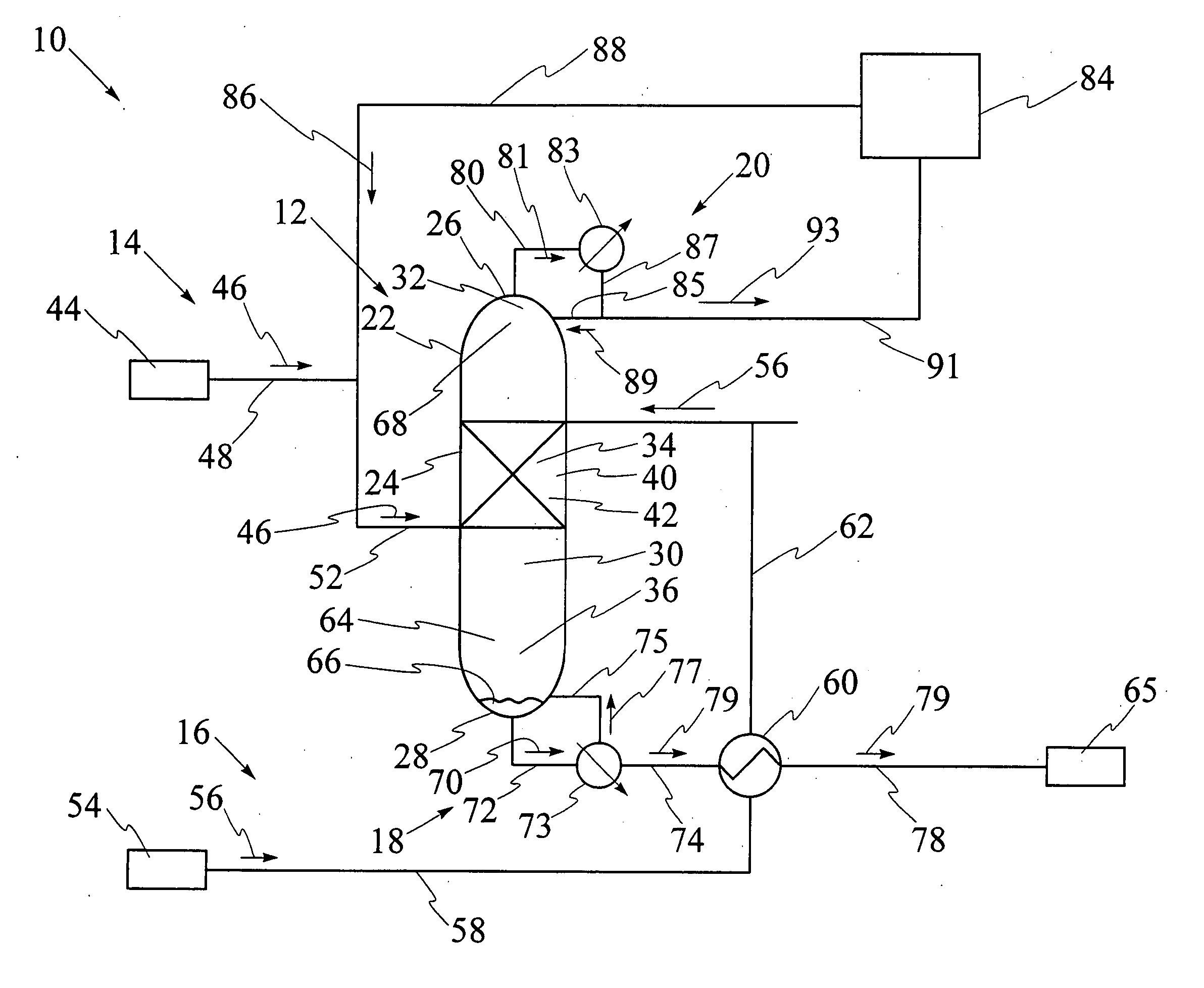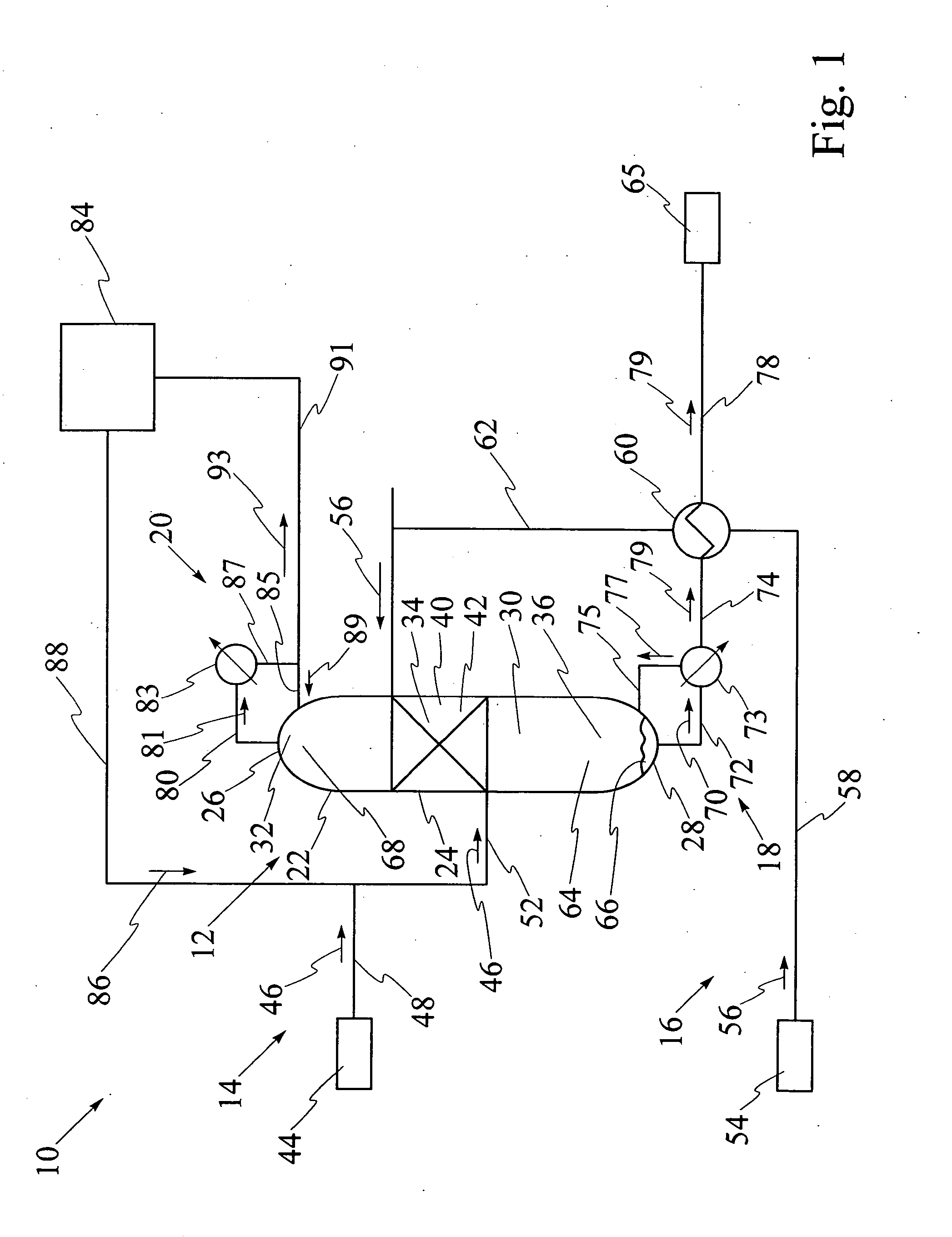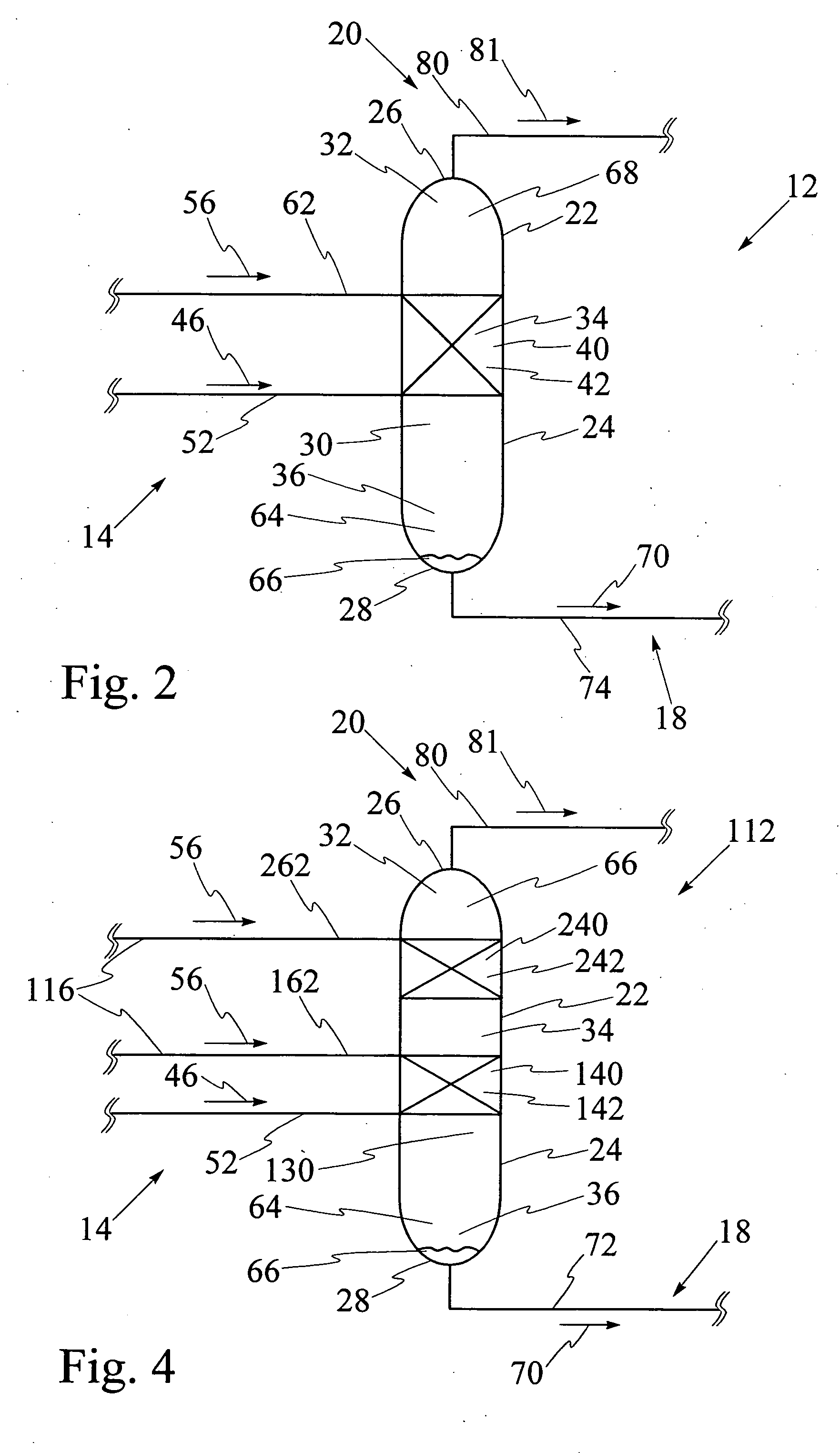Process for production of alcohols
a technology for alcohol production and process, applied in the direction of climate sustainability, chemical industry, organic compound preparation, etc., can solve the problem of requiring several expensive steps
- Summary
- Abstract
- Description
- Claims
- Application Information
AI Technical Summary
Benefits of technology
Problems solved by technology
Method used
Image
Examples
example 1
[0092] Referring to FIG. 9, catalytic distillation column 12 having single catalyst bed 40 has been used for hydration of propene to isopropanol at a pressure of 2 megaPascals. The reaction mixture includes propene, water, isopropanol and di-isopropyl ether, also known as DIPE. The computer model was run for catalytic distillation column having the dimensions illustrated in FIG. 9. It has been found that catalytic distillation column 12 having the above dimensions is effective for separation of propene at top 26 and liquid isopropanol at base 28. First portion 32 of interior cavity 30 has four stages for rectification of volatiles. Stage 5 which is shown in FIGS. 6 and 7, comprises a second portion 34 of interior cavity 30 and contains catalyst bed, 40. Third portion 36 of interior cavity 30 comprises stage 6 through stage 26, for stripping liquid isopropanol from the reaction mixture. The temperatures at stage 1, stage 26, and at catalyst bed 40 at stage 5 respectively are 50.degre...
example 2
[0093] Referring to FIG. 10, catalytic distillation column 12 having substantially the same design and size as in Example 1 has been used for hydration of propene to isopropanol at a pressure of 4 megapascals. The computer model has been used to determine that the temperatures at stage 1, stage 26, and at catalyst bed 40 at stage 5 respectively are 85.degree. C., 218.degree. C. and 169.6.degree. C., as illustrated in FIG. 10. The molar feed rates for propene and water and the recovery rates for propene and isopropanol are each illustrated as values in kilomoles per hour. Propene conversion is 35%, water conversion is 96.7%, and the purity of the isopropanol stream is over 95%, with 5% DIPE, under these operating conditions.
example 3
[0094] Referring to FIG. 11, catalytic distillation column 112 having two spaced apart catalyst beds 140 and 240 has been used for hydration of propene to isopropanol at a pressure of 2 megaPascals. The computer model was run for catalytic distillation column having the dimensions illustrated in FIG. 11. First portion 32 of interior cavity has two stages for rectification of volatiles. Referring to FIGS. 6 and 7, second portion 34 contains first catalyst bed 140 at stage 5 and second catalyst bed 240 at stage 3, first catalyst bed 140 and second catalyst bed 240 being spaced apart by stage 4. Third portion 36 comprises stage 6 through stage 26, for stripping liquid isopropanol from the reaction mixture. The temperatures at stage 1, stage 28, at first catalyst bed at stage 5 and at second catalyst bed at stage 3 respectively are 50.degree. C., 187.degree. C., 137.degree. C. and 132.degree. C., as illustrated. The molar feed rates for propene and water and the recovery rates for prope...
PUM
| Property | Measurement | Unit |
|---|---|---|
| pressure | aaaaa | aaaaa |
| temperature | aaaaa | aaaaa |
| pressure | aaaaa | aaaaa |
Abstract
Description
Claims
Application Information
 Login to View More
Login to View More - R&D
- Intellectual Property
- Life Sciences
- Materials
- Tech Scout
- Unparalleled Data Quality
- Higher Quality Content
- 60% Fewer Hallucinations
Browse by: Latest US Patents, China's latest patents, Technical Efficacy Thesaurus, Application Domain, Technology Topic, Popular Technical Reports.
© 2025 PatSnap. All rights reserved.Legal|Privacy policy|Modern Slavery Act Transparency Statement|Sitemap|About US| Contact US: help@patsnap.com



